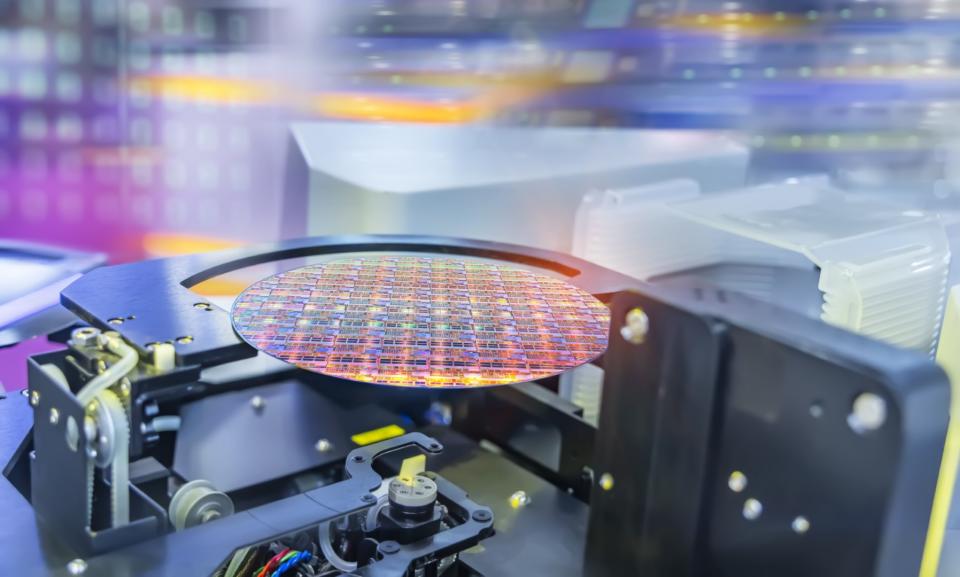
Intel (NASDAQ: INTC) reported a net loss of $1.6 billion in the second quarter, a swing of more than $3 billion year over year in the wrong direction. The company’s adjusted gross margin was 38.7%, down from the same quarter last year and a mile away from its long-term target of 60%.
There are a lot of moving parts contributing to Intel’s plunging bottom line, but a major component is the company’s aggressive push to lead the market for artificial intelligence (AI) PCs.
Accelerating Meteor Lake
Intel launched its Meteor Lake laptop chips late last year. These were the first PC central processing units (CPUs) from Intel that featured dedicated AI processors, although the AI horsepower included is well below newer chips from AMD and Qualcomm.
Still, Meteor Lake marks the beginning of Intel’s efforts to carve out an advantage in the AI PC market. The company expects AI PCs to account for more than 50% of the market in 2026 as consumers upgrade to take advantage of advanced AI features.
Intel has shipped more than 15 million of its Meteor Lake chips so far, but at a significant cost. Intel chose to accelerate the ramp of Meteor Lake to meet demand and move wafer production from Oregon to Ireland, where wafer costs are currently higher. The Ireland fab will eventually be more efficient as production scales, but it’s still early.
According to analyst Patrick Moorhead, Intel has been running “hot lots” of Meteor Lake. This essentially means that Intel is prioritizing Meteor Lake batches to produce them more quickly at the cost of slowing down everything else and making the overall foundry less efficient.
Meteor Lake is Intel’s first tile-based PC chip and the first to be manufactured partially on its Intel 4 process. While it’s unclear whether Intel is having yield issues with Intel 4, for the time being, the ramp of Meteor Lake is hitting the bottom line hard.
Outsourcing Lunar Lake
While Meteor Lake’s profitability will improve as the Ireland fab scales, that improvement will be offset by Lunar Lake. Lunar Lake will officially launch in September with huge improvements over Meteor Lake in terms of AI processing power, graphics performance, and battery life. However, Intel chose to almost completely outsource manufacturing to Taiwan Semiconductor Manufacturing Company.
The downside of outsourcing is higher costs. Intel CFO David Zinsner noted that the company has seen cost inflation, which will work against gross margins next year as Lunar Lake ramps. Lunar Lake also includes memory directly in the package to maximize efficiency, which will further hurt margins. “So, we’re going to have to essentially buy that at a price and turn around and include that in our price at 0% margin. So, that puts some negative pressure on the margins,” Zinsner said during the earnings call.
Lunar Lake should improve Intel’s positioning in the AI PC market. There are already 80 Copilot+ branded PCs from 20 original equipment manufacturers (OEMs), which will begin shipping in the third quarter, ahead of the holiday season. However, the new chip will be a drag on profitability.
Looking ahead to Panther Lake
Intel’s gross margin troubles in the PC business should be largely solved by Panther Lake, the successor to Lunar Lake, which is on track to launch in 2025. Panther Lake will use the upcoming Intel 18A process. By bringing manufacturing back in-house, Intel expects Panther Lake to have a far better cost structure than Lunar Lake.
While Panther Lake will launch in 2025, the product will ramp into 2026 along with the Intel 18A process. “I think, you know, ’26 should be a good year for us in terms of gross margins,” Zinsner said during the earnings call.
Intel is pushing hard to battle both AMD and Qualcomm in the AI PC market. It’s eating higher costs to get more Meteor Lake chips out the door faster, and its use of outsourcing for Lunar Lake will hurt gross margins through 2025. But the story should start to change in 2026 and beyond as the benefits of Intel’s manufacturing investments begin to pay off.
Should you invest $1,000 in Intel right now?
Before you buy stock in Intel, consider this:
The Motley Fool Stock Advisor analyst team just identified what they believe are the 10 best stocks for investors to buy now… and Intel wasn’t one of them. The 10 stocks that made the cut could produce monster returns in the coming years.
Consider when Nvidia made this list on April 15, 2005… if you invested $1,000 at the time of our recommendation, you’d have $657,306!*
Stock Advisor provides investors with an easy-to-follow blueprint for success, including guidance on building a portfolio, regular updates from analysts, and two new stock picks each month. The Stock Advisor service has more than quadrupled the return of S&P 500 since 2002*.
*Stock Advisor returns as of July 29, 2024
Timothy Green has positions in Intel. The Motley Fool has positions in and recommends Advanced Micro Devices, Qualcomm, and Taiwan Semiconductor Manufacturing. The Motley Fool recommends Intel and recommends the following options: long January 2025 $45 calls on Intel and short August 2024 $35 calls on Intel. The Motley Fool has a disclosure policy.
Intel’s AI PCs Are Killing Profits was originally published by The Motley Fool
EMEA Tribune is not involved in this news article, it is taken from our partners and or from the News Agencies. Copyright and Credit go to the News Agencies, email news@emeatribune.com Follow our WhatsApp verified Channel





